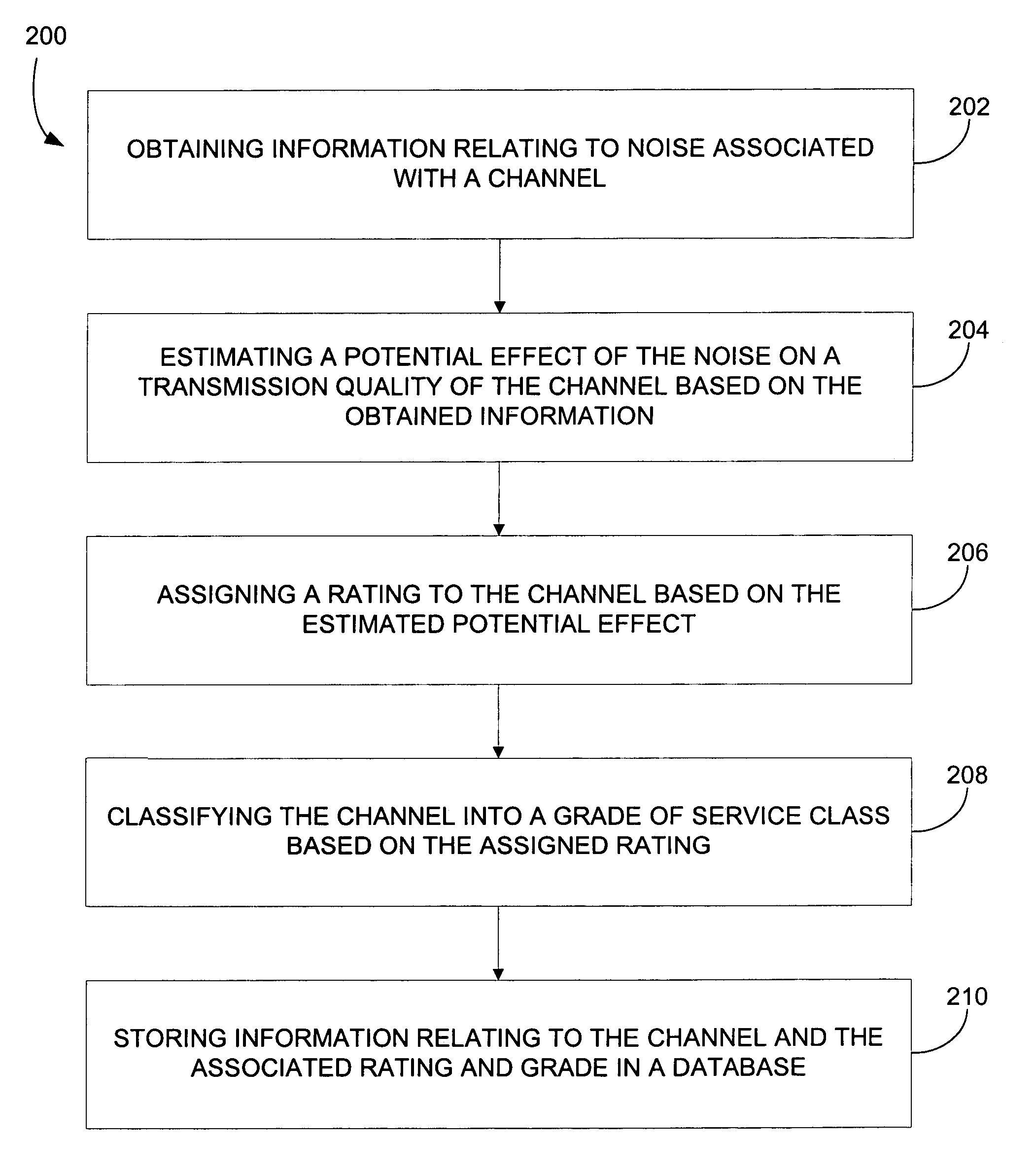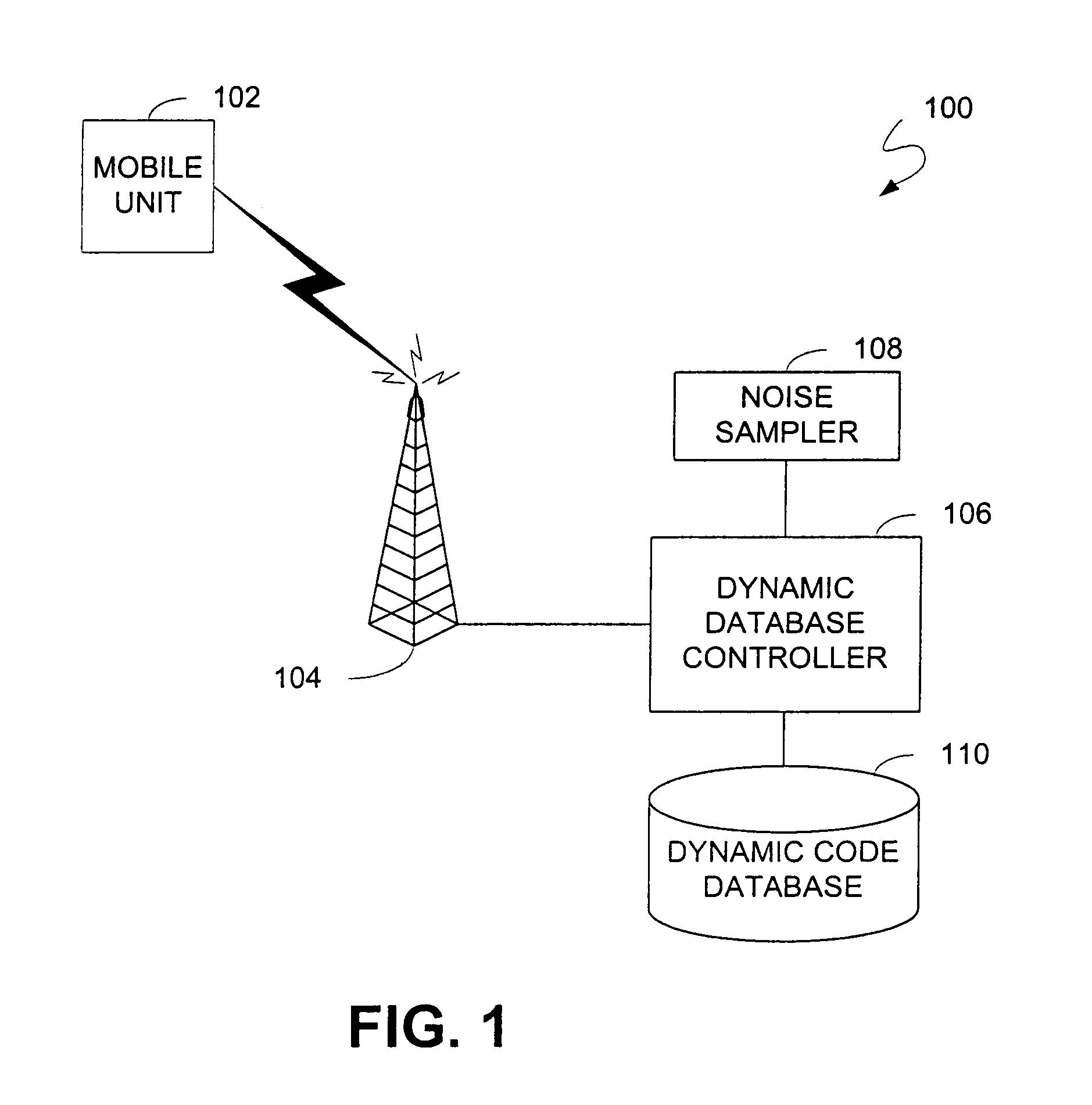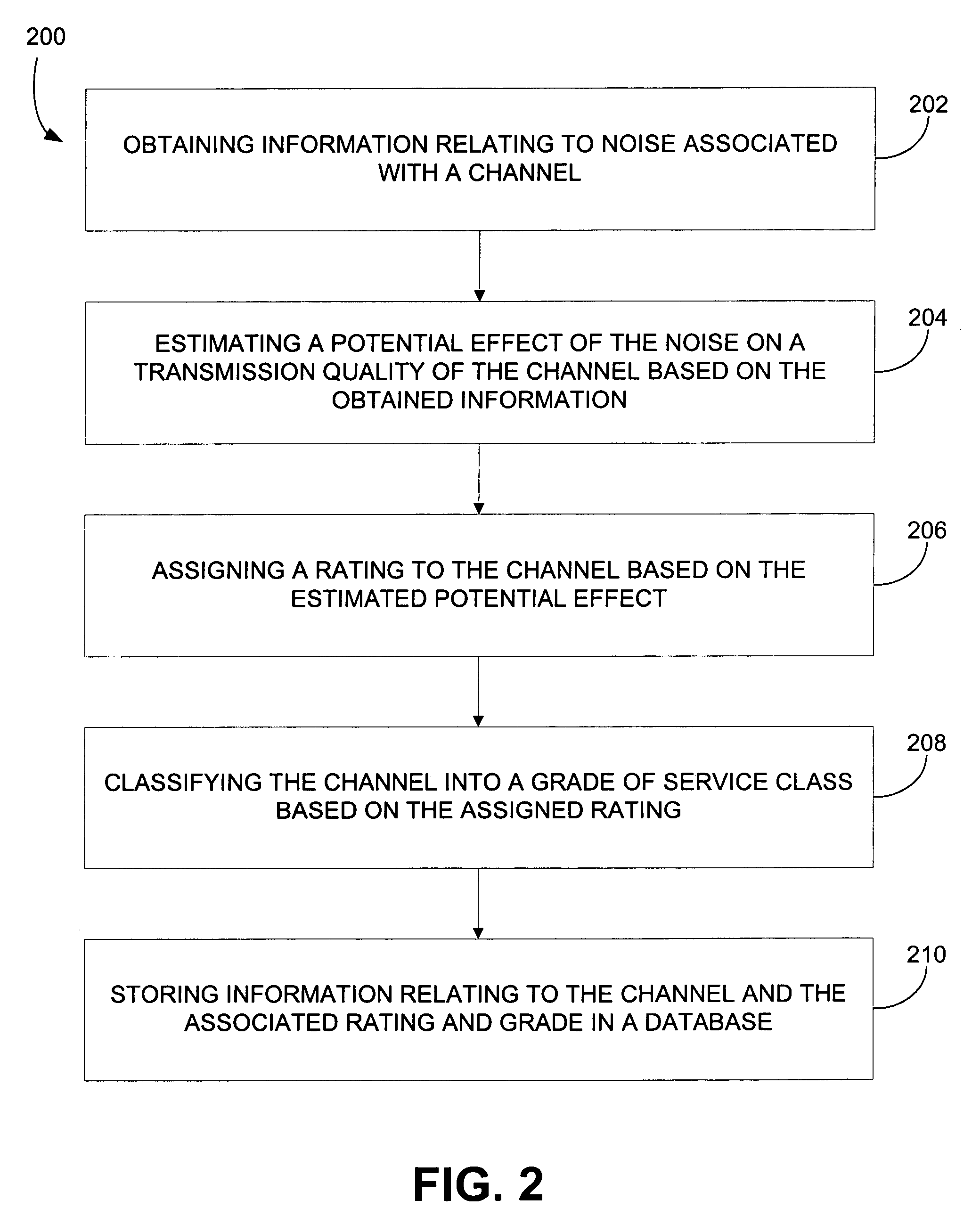Pre-testing and certification of multiple access codes
a technology of access codes and pre-testing, applied in the field of wireless communication systems, can solve the problems of inability to allow overlap of codes between adjacent cells, inability to reuse codes, and inability to test multiple access codes
- Summary
- Abstract
- Description
- Claims
- Application Information
AI Technical Summary
Benefits of technology
Problems solved by technology
Method used
Image
Examples
Embodiment Construction
[0023]In overview, embodiments of the present invention help improve code allocation efficiency by digitally sampling the potential impact of channel noise on the available code set by, for example, using cross-correlation between the codes and the noise. A statistical analysis of the digitized cross-correlation may then be executed to see the effect of the noise on the transmission quality by calculating a projected bit error rate. Noise parameters such as duration and amplitude may also be quantified. This information may be used to grade and assign each code into “bins” identified for optimum code usage. Bins can be created to correspond to a code's suitability for a particular data type. For example, some illustrative data types and their associated code attributes may include: (1) alphanumeric data which requires codes with the lowest number of projected bit errors; (2) video data which requires codes with the next lowest number of bit errors; (3) audio data which can use codes...
PUM
 Login to View More
Login to View More Abstract
Description
Claims
Application Information
 Login to View More
Login to View More - R&D
- Intellectual Property
- Life Sciences
- Materials
- Tech Scout
- Unparalleled Data Quality
- Higher Quality Content
- 60% Fewer Hallucinations
Browse by: Latest US Patents, China's latest patents, Technical Efficacy Thesaurus, Application Domain, Technology Topic, Popular Technical Reports.
© 2025 PatSnap. All rights reserved.Legal|Privacy policy|Modern Slavery Act Transparency Statement|Sitemap|About US| Contact US: help@patsnap.com



